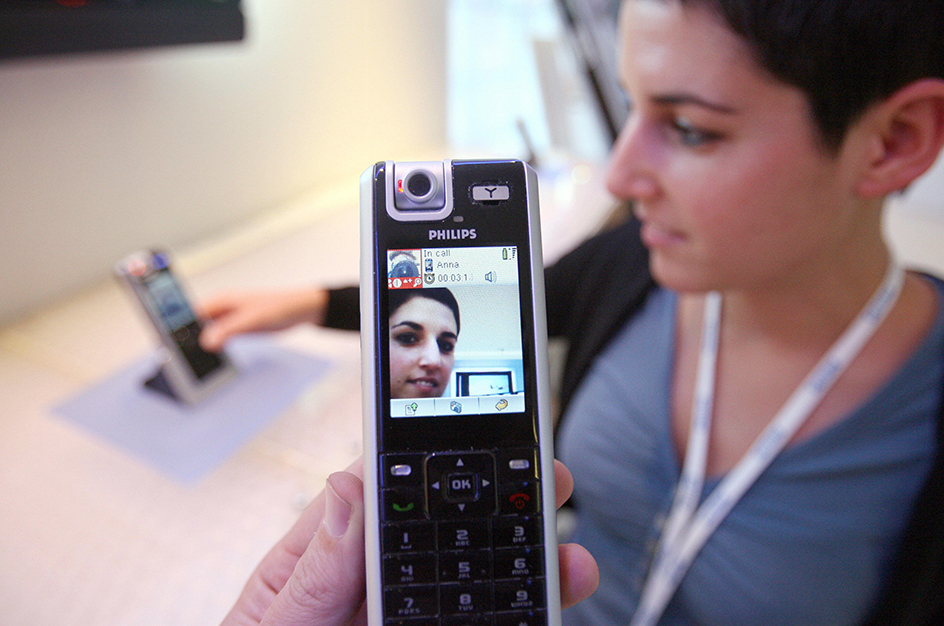Videophone is a telephonelike device or combination of devices that sends and receives both images and sound. Videophone systems enable users to see each other while talking. To participate fully, each person in a videophone conversation must have a videophone. Many computers and mobile phones can function as videophones.

Videophones have at least four parts. They are: (1) a camera to capture images or video, (2) a screen to display images or video, (3) a microphone to capture sound, and (4) a speaker to re-create sound.
The camera records the user’s image, much as a video camera would. The microphone picks up the user’s speech. The videophone may convert the sound and image into a continuously varying analog signal. But most videophones use a digital (numeric) code that can be sent over the Internet. The signal or code is sent to the receiving videophone, which converts it back into sound and image.
Early videophones had a camera, screen, microphone, and speaker built into a single specialized device. These expensive videophones connected to one another through telephone lines. Later videophones connected through radio waves and satellite transmission. Today, computers with cameras and camera-equipped cell phones serve many of the same functions as more traditional videophones. These modern videophones connect to one another through cellular phone networks or the Internet.
People have envisioned videophones since the early 1900’s. The American Telephone and Telegraph Company (AT&T) displayed a videophone at the New York World’s Fair in 1964 and introduced Picturephone, a videophone service in public phone booths. None of the early videophone systems achieved widespread use, in part because they were too expensive. Also, many people did not want to be concerned about their appearance when talking on the telephone.
